Top companies trust Airbyte to centralize their Data









This includes selecting the data you want to extract - streams and columns -, the sync frequency, where in the destination you want that data to be loaded.




This includes selecting the data you want to extract - streams and columns -, the sync frequency, where in the destination you want that data to be loaded.

Set up a source connector to extract data from in Airbyte
Choose from one of 300+ sources where you want to import data from. This can be any API tool, cloud data warehouse, database, data lake, files, among other source types. You can even build your own source connector in minutes with our no-code connector builder.


Configure the connection in Airbyte
Ship more quickly with the only solution that fits ALL your needs.
As your tools and edge cases grow, you deserve an extensible and open ELT solution that eliminates the time you spend on building and maintaining data pipelines
Leverage the largest catalog of connectors
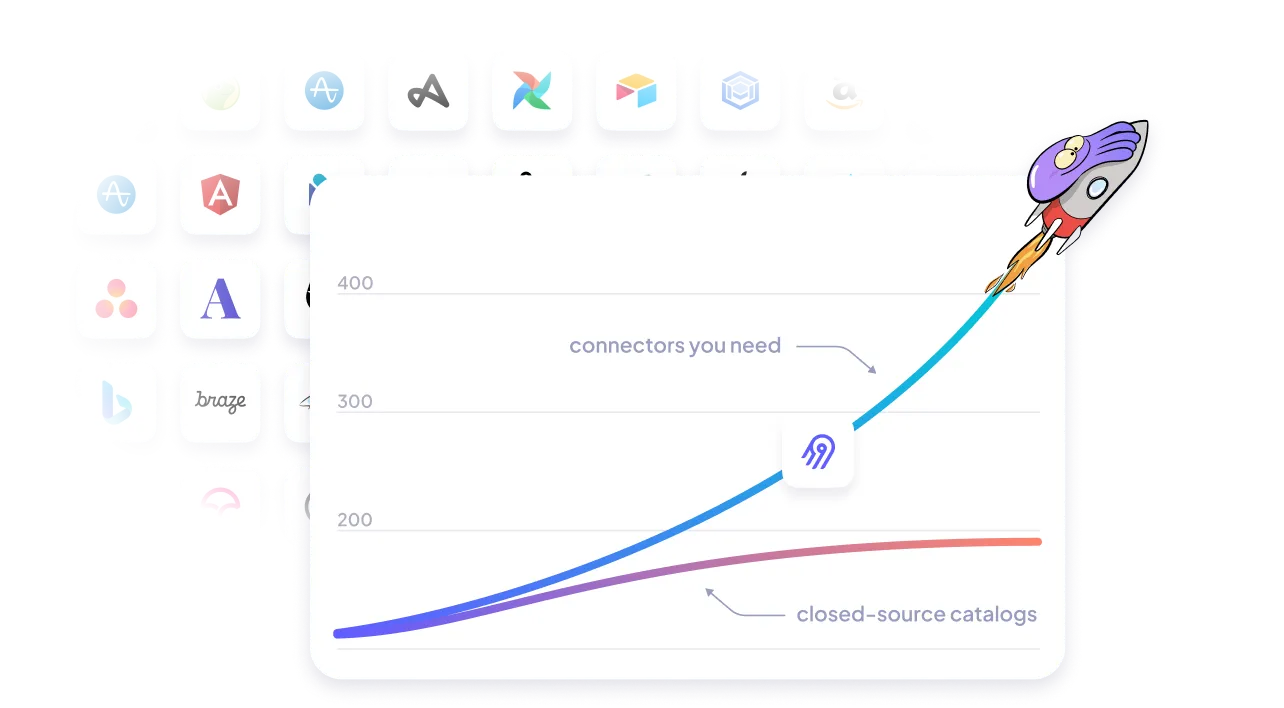
Cover your custom needs with our extensibility
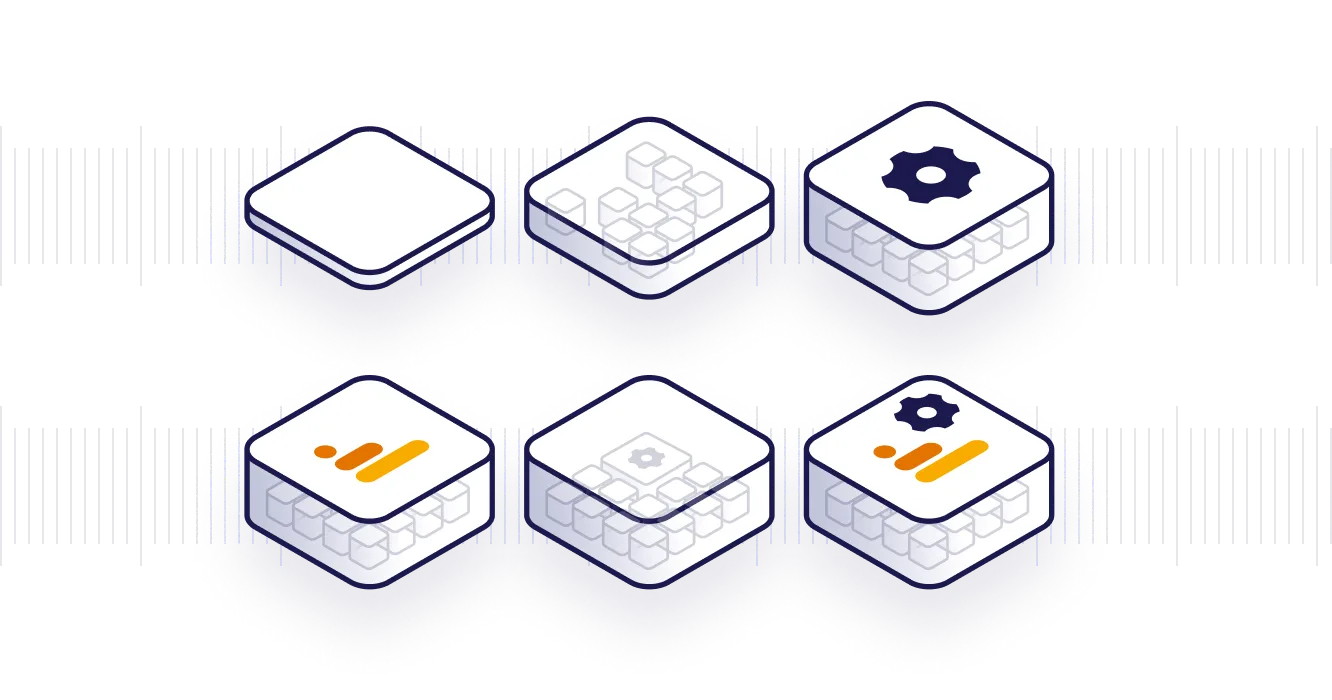
Free your time from maintaining connectors, with automation
- Automated schema change handling, data normalization and more
- Automated data transformation orchestration with our dbt integration
- Automated workflow with our Airflow, Dagster and Prefect integration
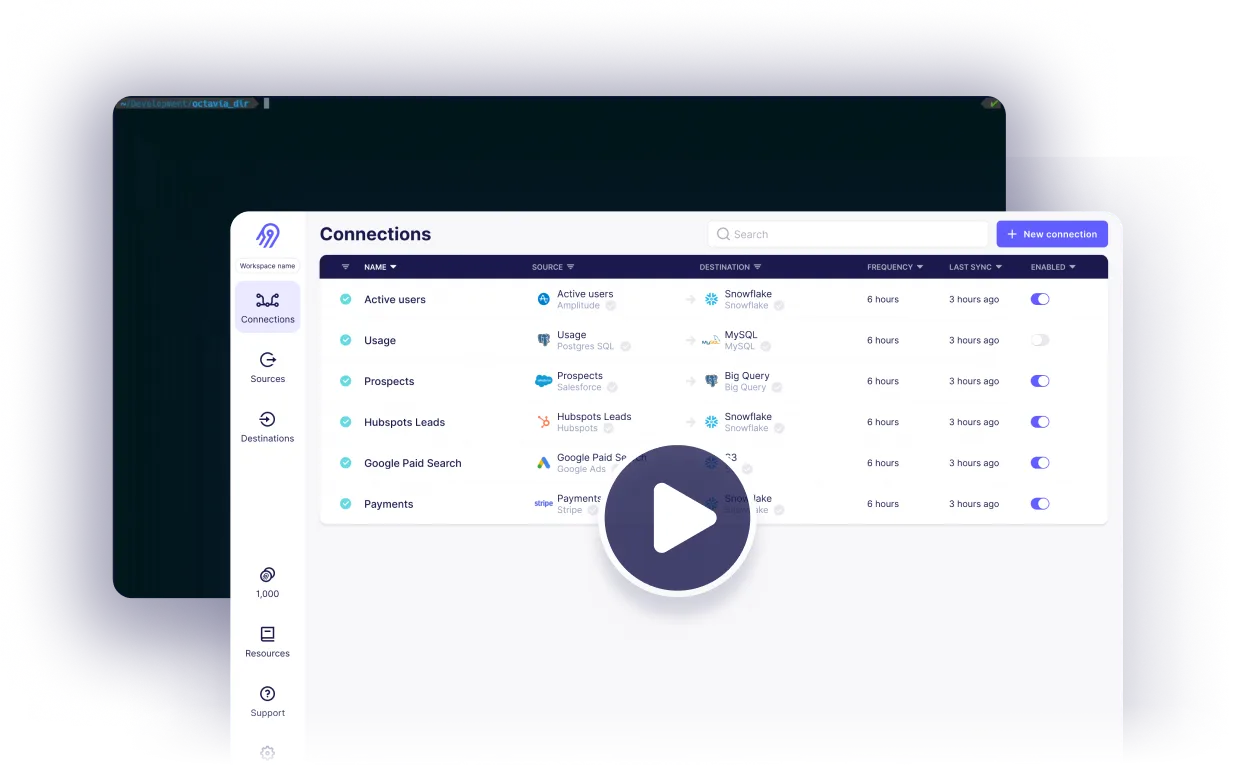
Reliability at every level



Ship more quickly with the only solution that fits ALL your needs.
As your tools and edge cases grow, you deserve an extensible and open ELT solution that eliminates the time you spend on building and maintaining data pipelines
Leverage the largest catalog of connectors

Cover your custom needs with our extensibility

Free your time from maintaining connectors, with automation
- Automated schema change handling, data normalization and more
- Automated data transformation orchestration with our dbt integration
- Automated workflow with our Airflow, Dagster and Prefect integration

Reliability at every level



Ship more quickly with the only solution that fits ALL your needs.
As your tools and edge cases grow, you deserve an extensible and open ELT solution that eliminates the time you spend on building and maintaining data pipelines
Leverage the largest catalog of connectors

Cover your custom needs with our extensibility

Free your time from maintaining connectors, with automation
- Automated schema change handling, data normalization and more
- Automated data transformation orchestration with our dbt integration
- Automated workflow with our Airflow, Dagster and Prefect integration

Reliability at every level



Move large volumes, fast.
Change Data Capture.
Security from source to destination.

We support the CDC methods your company needs
Log-based CDC



Timestamp-based CDC


Airbyte Open Source


Airbyte Cloud

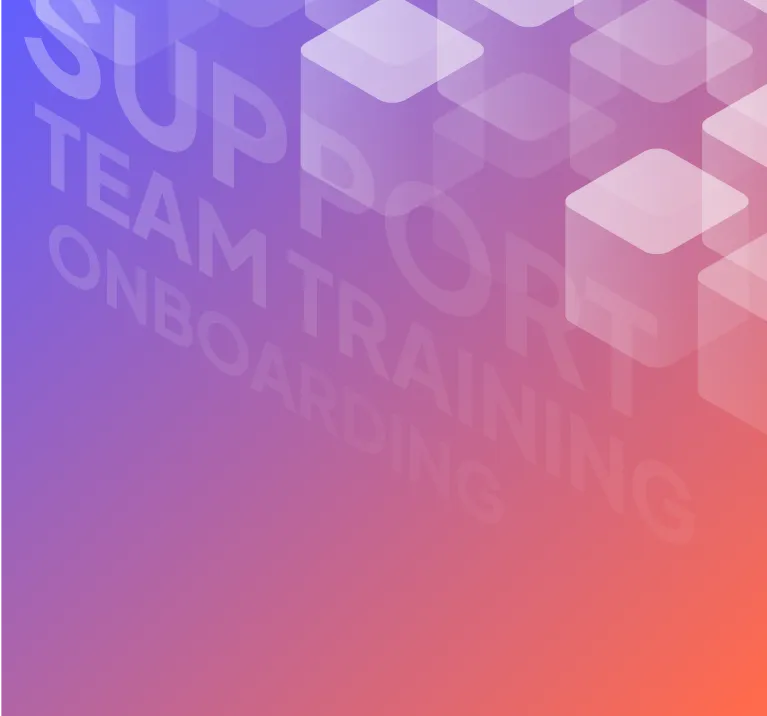
Airbyte Enterprise

Why choose Airbyte as the backbone of your data infrastructure?
Keep your data engineering costs in check
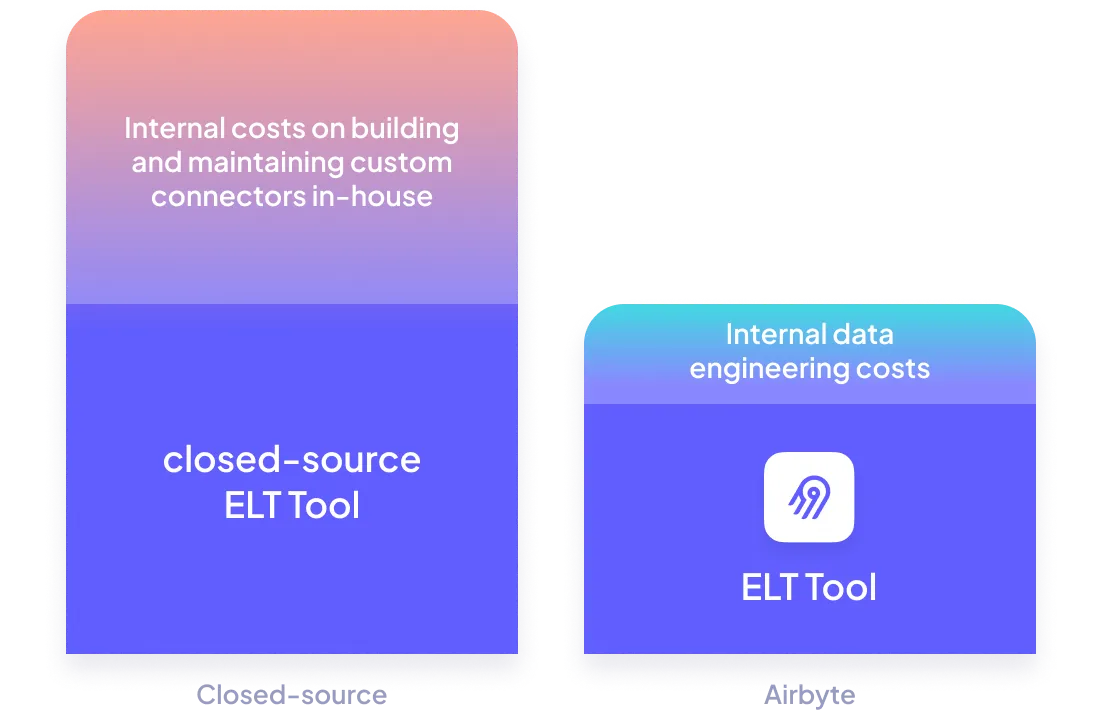
Get Airbyte hosted where you need it to be
- Airbyte Cloud: Have it hosted by us, with all the security you need (SOC2, ISO, GDPR, HIPAA Conduit).
- Airbyte Enterprise: Have it hosted within your own infrastructure, so your data and secrets never leave it.

White-glove enterprise-level support
Including for your Airbyte Open Source instance with our premium support.
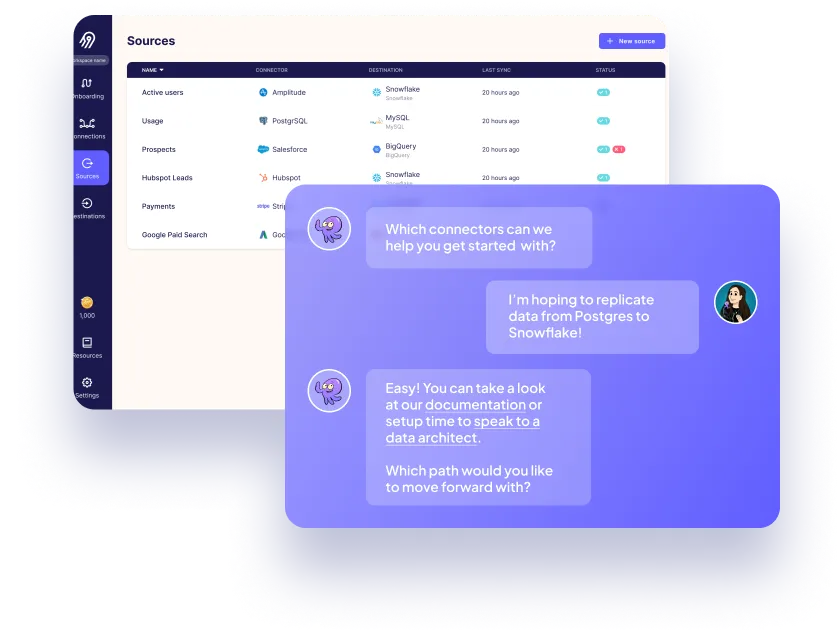
Airbyte supports a growing list of destinations, including cloud data warehouses, lakes, and databases.
Airbyte supports a growing list of destinations, including cloud data warehouses, lakes, and databases.
Airbyte supports a growing list of sources, including API tools, cloud data warehouses, lakes, databases, and files, or even custom sources you can build.



Fnatic, based out of London, is the world's leading esports organization, with a winning legacy of 16 years and counting in over 28 different titles, generating over 13m USD in prize money. Fnatic has an engaged follower base of 14m across their social media platforms and hundreds of millions of people watch their teams compete in League of Legends, CS:GO, Dota 2, Rainbow Six Siege, and many more titles every year.
Ready to get started?
FAQs
What is ETL?
ETL, an acronym for Extract, Transform, Load, is a vital data integration process. It involves extracting data from diverse sources, transforming it into a usable format, and loading it into a database, data warehouse or data lake. This process enables meaningful data analysis, enhancing business intelligence.
PostHog is an open-source Product Analytics software-as-a-service (Saas) for developers, aimed at helping software teams better understand user behavior. Offering a private cloud option to alleviate GDPR concerns, it provides the features engineers need most: it helps them automate events, understand their product usage and user data collections, tracks which features are being triggered for product events, etc.
Posthog's API gives access to a wide range of data related to user behavior and interactions with a website or application. The following are the categories of data that can be accessed through Posthog's API:
1. Events: This includes data related to user actions such as clicks, page views, and form submissions.
2. Users: This includes data related to user profiles such as email addresses, names, and user IDs.
3. Sessions: This includes data related to user sessions such as session IDs, start and end times, and session duration.
4. Funnels: This includes data related to user journeys through a website or application such as the steps they take to complete a specific task.
5. Retention: This includes data related to user retention such as the percentage of users who return to a website or application after a certain period of time.
6. Cohorts: This includes data related to user groups such as users who signed up during a specific time period or users who completed a specific action.
7. Trends: This includes data related to changes in user behavior over time such as changes in the number of page views or clicks.
What is ELT?
ELT, standing for Extract, Load, Transform, is a modern take on the traditional ETL data integration process. In ELT, data is first extracted from various sources, loaded directly into a data warehouse, and then transformed. This approach enhances data processing speed, analytical flexibility and autonomy.
Difference between ETL and ELT?
ETL and ELT are critical data integration strategies with key differences. ETL (Extract, Transform, Load) transforms data before loading, ideal for structured data. In contrast, ELT (Extract, Load, Transform) loads data before transformation, perfect for processing large, diverse data sets in modern data warehouses. ELT is becoming the new standard as it offers a lot more flexibility and autonomy to data analysts.
What is ETL?
ETL, an acronym for Extract, Transform, Load, is a vital data integration process. It involves extracting data from diverse sources, transforming it into a usable format, and loading it into a database, data warehouse or data lake. This process enables meaningful data analysis, enhancing business intelligence.
PostHog is an open-source Product Analytics software-as-a-service (Saas) for developers, aimed at helping software teams better understand user behavior. Offering a private cloud option to alleviate GDPR concerns, it provides the features engineers need most: it helps them automate events, understand their product usage and user data collections, tracks which features are being triggered for product events, etc.
Posthog's API gives access to a wide range of data related to user behavior and interactions with a website or application. The following are the categories of data that can be accessed through Posthog's API:
1. Events: This includes data related to user actions such as clicks, page views, and form submissions.
2. Users: This includes data related to user profiles such as email addresses, names, and user IDs.
3. Sessions: This includes data related to user sessions such as session IDs, start and end times, and session duration.
4. Funnels: This includes data related to user journeys through a website or application such as the steps they take to complete a specific task.
5. Retention: This includes data related to user retention such as the percentage of users who return to a website or application after a certain period of time.
6. Cohorts: This includes data related to user groups such as users who signed up during a specific time period or users who completed a specific action.
7. Trends: This includes data related to changes in user behavior over time such as changes in the number of page views or clicks.
What is ELT?
ELT, standing for Extract, Load, Transform, is a modern take on the traditional ETL data integration process. In ELT, data is first extracted from various sources, loaded directly into a data warehouse, and then transformed. This approach enhances data processing speed, analytical flexibility and autonomy.
Difference between ETL and ELT?
ETL and ELT are critical data integration strategies with key differences. ETL (Extract, Transform, Load) transforms data before loading, ideal for structured data. In contrast, ELT (Extract, Load, Transform) loads data before transformation, perfect for processing large, diverse data sets in modern data warehouses. ELT is becoming the new standard as it offers a lot more flexibility and autonomy to data analysts.
What is ETL?
ETL, an acronym for Extract, Transform, Load, is a vital data integration process. It involves extracting data from diverse sources, transforming it into a usable format, and loading it into a database, data warehouse or data lake. This process enables meaningful data analysis, enhancing business intelligence.
PostHog is an open-source Product Analytics software-as-a-service (Saas) for developers, aimed at helping software teams better understand user behavior. Offering a private cloud option to alleviate GDPR concerns, it provides the features engineers need most: it helps them automate events, understand their product usage and user data collections, tracks which features are being triggered for product events, etc.
Posthog's API gives access to a wide range of data related to user behavior and interactions with a website or application. The following are the categories of data that can be accessed through Posthog's API:
1. Events: This includes data related to user actions such as clicks, page views, and form submissions.
2. Users: This includes data related to user profiles such as email addresses, names, and user IDs.
3. Sessions: This includes data related to user sessions such as session IDs, start and end times, and session duration.
4. Funnels: This includes data related to user journeys through a website or application such as the steps they take to complete a specific task.
5. Retention: This includes data related to user retention such as the percentage of users who return to a website or application after a certain period of time.
6. Cohorts: This includes data related to user groups such as users who signed up during a specific time period or users who completed a specific action.
7. Trends: This includes data related to changes in user behavior over time such as changes in the number of page views or clicks.
1. First, navigate to the "Sources" tab on the Airbyte dashboard and click "Create a new source."
2. Select "Posthog" from the list of available sources.
3. Enter a name for your Posthog source and click "Next."
4. Enter the URL for your Posthog instance and click "Next."
5. Enter your Posthog API key and click "Next."
6. Select the tables you want to replicate and click "Next."
7. Choose the frequency at which you want Airbyte to sync your data and click "Next."
8. Review your settings and click "Create source" to finish setting up your Posthog source connector on Airbyte.
What is ELT?
ELT, standing for Extract, Load, Transform, is a modern take on the traditional ETL data integration process. In ELT, data is first extracted from various sources, loaded directly into a data warehouse, and then transformed. This approach enhances data processing speed, analytical flexibility and autonomy.
Difference between ETL and ELT?
ETL and ELT are critical data integration strategies with key differences. ETL (Extract, Transform, Load) transforms data before loading, ideal for structured data. In contrast, ELT (Extract, Load, Transform) loads data before transformation, perfect for processing large, diverse data sets in modern data warehouses. ELT is becoming the new standard as it offers a lot more flexibility and autonomy to data analysts.





































